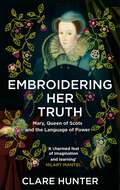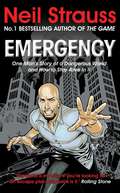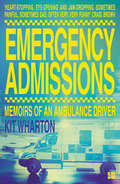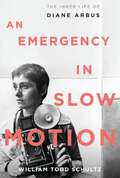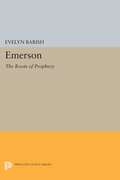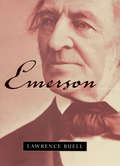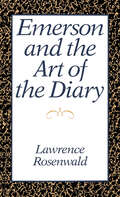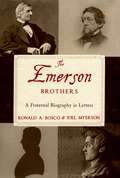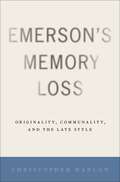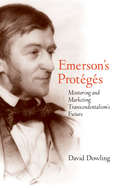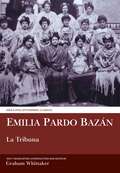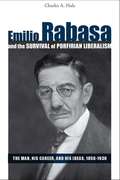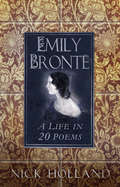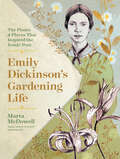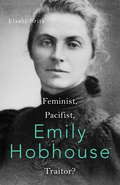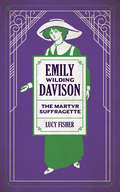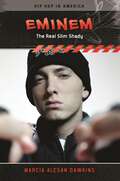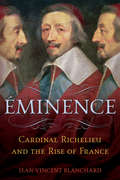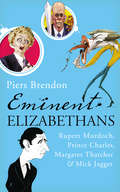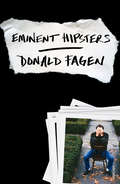- Table View
- List View
Embroidering Her Truth: Mary, Queen of Scots and the Language of Power
by Clare HunterI felt that Mary was there, pulling at my sleeve, willing me to appreciate the artistry, wanting me to understand the dazzle of the material world that shaped her.At her execution Mary, Queen of Scots wore red. Widely known as the colour of strength and passion, it was in fact worn by Mary as the Catholic symbol of martyrdom.In sixteenth-century Europe women's voices were suppressed and silenced. Even for a queen like Mary, her prime duty was to bear sons. In an age when textiles expressed power, Mary exploited them to emphasise her female agency. From her lavishly embroidered gowns as the prospective wife of the French Dauphin to the fashion dolls she used to encourage a Marian style at the Scottish court and the subversive messages she embroidered in captivity for her supporters, Mary used textiles to advance her political agenda, affirm her royal lineage and tell her own story.In this eloquent cultural biography, Clare Hunter exquisitely blends history, politics and memoir to tell the story of a queen in her own voice.
Emergency: One man's story of a dangerous world, and how to stay alive in it
by Neil StraussWith the economic downturn, the hysterical Swine Flu frenzy and the systemic corruption of our political system we need someone to guide us through these difficult times. Emergency tells how Strauss went from shivering the whole night through in a water-logged sleeping bag on a tracking course, with only his broken Blackberry for company, to being the well-trained and even better equipped survival expert he is today. Encountering a host of weird and hilarious characters along the way, Strauss's timely and wry look at the The End of the World As We Know It will make you glad you chose to be on his side.
Emergency Admissions: Memoirs Of An Ambulance Driver
by Kit WhartonA glimpse into the extraordinary world of ambulance driving from the man behind the wheel. ‘Heart-stopping, eye-opening and jaw-dropping. Sometimes painful, sometimes sad, often very, very funny’ Craig Brown
An Emergency in Slow Motion: The Inner Life of Diane Arbus
by William Todd SchultzDiane Arbus was one of the most brilliant and revered photographers in the history of American art. Her portraits, in stark black and white, seemed to reveal the psychological truths of their subjects. But after she committed suicide at the age of 48, the presumed chaos and darkness of her own inner life became, for many viewers, inextricable from her work.In the spirit of Janet Malcolm's classic examination of Sylvia Plath, The Silent Woman, William Todd Schultz's An Emergency in Slow Motion reveals the creative and personal struggles of Diane Arbus. Schultz, an expert in personality psychology, veers from traditional biography to look at Arbus's life through the prism of five central mysteries: her childhood, her outcast affinity, her sexuality, her time in therapy, and her suicide. He seeks not to give Arbus some definitive diagnosis, but to ponder some of the private motives behind her public works and acts. In this approach, Schultz not only goes deeper into her life than any previous writing, but provides a template to think about the creative life in general.Schultz's careful analysis is informed, in part, by the recent release of Arbus's writing by her estate, as well as interviews with Arbus's last therapist. An Emergency in Slow Motion combines new revelations and breathtaking insights into a must-read psychobiography about a monumental artist -- the first new look at Arbus in 25 years.
Emerson: The Roots of Prophecy
by Evelyn BarishEvelyn Barish began this book partly to inquire into a silence--Ralph Waldo Emerson's failure to discuss or mourn his father, who died when the boy was seven years old. As she probed the meaning of this loss, she found herself tracing the development of an American prophet, producing a detailed intellectual biography of Emerson's early years up to the writing of Nature. In the process she has painted a vivid picture of American society of the period and of Emerson's unusual family--including his aunt, Mary Moody Emerson, a brilliant and eccentric woman, who was described by Emerson as spinning at a higher velocity than all the other tops but who also rode around Concord in her shroud! In the years after the death of William Emerson, Mary Moody Emerson came to help her widowed sister-in-law, Ruth, rear her five sons and thus became a deep influence on the young Ralph Waldo. Barish reveals the complexities of the Emersons' family life, the preoccupations with death and questions of sexual identity in the Romantic fantasies that Emerson wrote as a youth, the emotional struggles of his student years at Harvard, and his private study of the unsettling ideas of the skeptical philosopher David Hume. Pursuing a series of small clues, she clears up the obscurity surrounding the crucial breakdown of his health during the vocational crisis of his twenties. Finally, she traces his path out of fear and self-doubt into autonomy, as he overcame crippling grief after the death of his first wife. Barish makes it clear how Emerson the American classic thinker emerged from a welter of conflicts and handicaps previously obscure to us. How did he free himself from the rigor mortis of his own cultural and personal past--from what he called the "corpse-cold Unitarianism of Brattle Street and Harvard College"--to become the liberator of America from the intellectual shackles of its colonial experience? Her answer redefines Emerson's "self-reliance" not in traditional transcendent or idealistic terms but as the result of real life and hard struggle--experience "passed through the fire of thought."Originally published in 1990.The Princeton Legacy Library uses the latest print-on-demand technology to again make available previously out-of-print books from the distinguished backlist of Princeton University Press. These editions preserve the original texts of these important books while presenting them in durable paperback and hardcover editions. The goal of the Princeton Legacy Library is to vastly increase access to the rich scholarly heritage found in the thousands of books published by Princeton University Press since its founding in 1905.
Emerson: Crossing Paths Over The Pacific
by Lawrence Buell"An institution is the lengthened shadow of one man," Ralph Waldo Emerson once wrote--and in this book, the leading scholar of New England literary culture looks at the long shadow Emerson himself has cast, and at his role and significance as a truly American institution. On the occasion of Emerson's 200th birthday, Lawrence Buell revisits the life of the nation's first public intellectual and discovers how he became a "representative man." Born into the age of inspired amateurism that emerged from the ruins of pre-revolutionary political, religious, and cultural institutions, Emerson took up the challenge of thinking about the role of the United States alone and in the world. With characteristic authority and grace, Buell conveys both the style and substance of Emerson's accomplishment--in his conception of America as the transplantation of Englishness into the new world, and in his prodigious work as writer, religious thinker, and philosopher. Here we see clearly the paradoxical key to his success, the fierce insistence on independence that acted so magnetically upon all around him. Steeped in Emerson's writings, and in the life and lore of the America of his day, Buell's book is as individual--and as compelling--as its subject. At a time when Americans and non-Americans alike are struggling to understand what this country is, and what it is about, Emerson gives us an answer in the figure of this representative American, an American for all, and for all times.
Emerson And The Art Of The Diary
by Lawrence RosenwaldThis first extended literary description and analysis of Emerson's journals, argues that they, and not his essays, are Emerson's masterpiece, constituting one of the greatest commentaries on nineteenth-century America by one of our most acute formal intelligences. First developing the critical methodology needed to examine the journal form, a genre long neglected by literary scholars, Rosenwald goes on to consider how Emerson the diarist found his form and what form he found. Included are comparisons between the journals and Emerson's lectures and essays, other Transcendentalist journals, the German aphorism-book, and books of quotation by Montaigne and Eckermann. Finally, the author gives an account of how, in his old age, Emerson lost his mastery of the form.
The Emerson Brothers: A Fraternal Biography in Letters
by Ronald A. Bosco Joel MyersonThe Emerson Brothers: A Fraternal Biography in Letters is a narrative and epistolary biography drawn from the unpublished lifelong correspondence exchanged among four brothers: Charles Chauncy, Edward Bliss, Ralph Waldo, and William Emerson. This is an extensive correspondence, for not counting Waldo's previously published letters, there are 768 letters exchanged among the brothers and an additional 483 unpublished letters from the brothers to their aunt Mary Moody Emerson, mother Ruth Haskins Emerson, and Charles' fiancée Elizabeth Hoar, among others. While lesser figures might have faltered under the burden of having been born an Emerson, with social, political, and ecclesiastic roots extending back to the first century of New England settlement, the brothers' letters reveal that all were invigorated by a shared sense of origin and aspired to make a significant reputation for themselves. Across six richly developed chapters, the signal events and friendships that shaped the Emerson brothers' lives are strung together to reveal a remarkable family culture. For the first time, The Emerson Brothers treats the illustrious history of the Emerson family in America as a foreshadowing of expectations the brothers inherited; defines the extent of Waldo's debt to William for his encounter with German Biblical Criticism; develops Charles' and Edward's incredibly promising but ultimately tragic lives; examines the profound emotional and intellectual impact of Aunt Mary on the younger Emersons; considers the three-year courtship between Charles and Elizabeth Hoar in the context of Waldo's own marriages; and studies the brothers' preoccupation with financial security for "the family" (revealing, too, that finances were at least as powerful a motivation behind Waldo's 1832 resignation from Boston's Second Church as were the death of his first wife and his religious doubts). This biography approaches Waldo's inner life in a way that makes him a figure to imagine personally by portraying him in relation to his brothers who are his intellectual equals. It offers an imaginative social and cultural history of one of our oldest and most gifted families, unique players in a period often considered to be the "American Renaissance."
Emerson's Memory Loss: Originality, Communality, and the Late Style
by Christopher HanlonRalph Waldo Emerson's dementia, an ordeal that marked his final two decades, has never been a secret among those who study Emerson's life. Still, few have focused on the period of Emerson's decline. Thus, his later thinking has succumbed to a process of critical forgetting too often ignored by scholars if not excluded from his oeuvre altogether. And yet Emerson's late output, composed as his patterns of cognition transformed profoundly, stages a reconsideration of interests that had preoccupied him for decades: the continuum of human thought and the rest of nature, the bearing of the individual toward the collective, the mind's relationship with the body. Emerson's Memory Loss presents an archive of texts documenting Emerson's intellectual, affective, and associative states during his late phase, along with the varying forms of shared connection from which these works emerge. It is also about the way such texts connect Emerson with a stream of thought in America, coursing through the works of other nineteenth-century writers and thinkers adjacent to Emerson, that emphasizes the aggregate over the singular, the social over the solipsistic, the engaged over the distant, and the many over the one. Hanlon attends to manuscripts and publications marking Emerson's collaborations with others which Emerson himself articulated as his most important work-texts written even as his ability to do so independently waned. Hanlon measures its resonance across broader strains of U.S. culture familiar to Margaret Fuller, Herman Melville, Walt Whitman, and more.
Emerson's Memory Loss: Originality, Communality, and the Late Style
by Christopher HanlonRalph Waldo Emerson's dementia, an ordeal that marked his final two decades, has never been a secret among those who study Emerson's life. Still, few have focused on the period of Emerson's decline. Thus, his later thinking has succumbed to a process of critical forgetting too often ignored by scholars if not excluded from his oeuvre altogether. And yet Emerson's late output, composed as his patterns of cognition transformed profoundly, stages a reconsideration of interests that had preoccupied him for decades: the continuum of human thought and the rest of nature, the bearing of the individual toward the collective, the mind's relationship with the body. Emerson's Memory Loss presents an archive of texts documenting Emerson's intellectual, affective, and associative states during his late phase, along with the varying forms of shared connection from which these works emerge. It is also about the way such texts connect Emerson with a stream of thought in America, coursing through the works of other nineteenth-century writers and thinkers adjacent to Emerson, that emphasizes the aggregate over the singular, the social over the solipsistic, the engaged over the distant, and the many over the one. Hanlon attends to manuscripts and publications marking Emerson's collaborations with others which Emerson himself articulated as his most important work-texts written even as his ability to do so independently waned. Hanlon measures its resonance across broader strains of U.S. culture familiar to Margaret Fuller, Herman Melville, Walt Whitman, and more.
Emerson's Protégés: Mentoring and Marketing Transcendentalism's Future
by Prof. David DowlingIn the late 1830s, Ralph Waldo Emerson, American essayist, poet, lecturer, and leader of the Transcendentalist movement, publicly called for a radical nationwide vocational reinvention, and an idealistic group of collegians eagerly responded. Assuming the role of mentor, editor, and promoter, Emerson freely offered them his time, financial support, and anti-materialistic counsel, and profoundly shaped the careers of his young acolytes—including Henry David Thoreau, renowned journalist and women’s rights advocate Margaret Fuller, and lesser-known literary figures such as Samuel Ward and reckless romantic poets Jones Very, Ellery Channing, and Charles Newcomb. Author David Dowling’s history of the professional and personal relationships between Emerson and his protégés—a remarkable collaboration that alternately proved fruitful and destructive, tension-filled and liberating—is a fascinating true story of altruism, ego, influence, pettiness, genius, and the bold attempt to reshape the literary market of the mid-nineteenth century.
The Emigrants: The Emigrants, The Rings Of Saturn, And Vertigo
by Michael Hulse W G SebaldAt first The Emigrants appears simply to document the lives of four Jewish émigrés in the twentieth century. But gradually, as Sebald's precise, almost dreamlike prose begins to draw their stories, the four narrations merge into one overwhelming evocation of exile and loss. Written with a bone-dry sense of humour and a fascination with the oddness of existence The Emigrants is highly original in its heady mix of fact, memory and fiction and photographs.
Émile Zola: A Very Short Introduction (Very Short Introductions)
by Brian NelsonÉmile Zola was the leader of the literary movement known as 'naturalism' and is one of the great figures of the novel. In his monumental Les Rougon-Macquart (1871-93), he explored the social and cultural landscape of the late nineteenth century in ways that scandalized bourgeois society. Zola opened the novel up to a new realm of subjects, including the realities of working-class life, class relations, and questions of gender and sexuality, and his writing embodied a new freedom of expression, with his bold, outspoken voice often inviting controversy. In this Very Short Introduction, Brian Nelson examines Zola's major themes and narrative art. He illuminates the social and political contexts of Zola's work, and provides readings of five individual novels (The Belly of Paris, L'Assommoir, The Ladies' Paradise, Germinal, and Earth). Zola's naturalist theories, which attempted to align literature with science, helped to generate the stereotypical notion that his fiction was somehow nonfictional. Nelson, however, reveals how the most distinctive elements of Zola's writing go far beyond his theoretical naturalism, giving his novels their unique force. Throughout, he sets Zola's work in context, considering his relations with contemporary painters, his role in the Dreyfus Affair, and his eventual murder. ABOUT THE SERIES: The Very Short Introductions series from Oxford University Press contains hundreds of titles in almost every subject area. These pocket-sized books are the perfect way to get ahead in a new subject quickly. Our expert authors combine facts, analysis, perspective, new ideas, and enthusiasm to make interesting and challenging topics highly readable.
Émile Zola: A Very Short Introduction (Very Short Introductions)
by Brian NelsonÉmile Zola was the leader of the literary movement known as 'naturalism' and is one of the great figures of the novel. In his monumental Les Rougon-Macquart (1871-93), he explored the social and cultural landscape of the late nineteenth century in ways that scandalized bourgeois society. Zola opened the novel up to a new realm of subjects, including the realities of working-class life, class relations, and questions of gender and sexuality, and his writing embodied a new freedom of expression, with his bold, outspoken voice often inviting controversy. In this Very Short Introduction, Brian Nelson examines Zola's major themes and narrative art. He illuminates the social and political contexts of Zola's work, and provides readings of five individual novels (The Belly of Paris, L'Assommoir, The Ladies' Paradise, Germinal, and Earth). Zola's naturalist theories, which attempted to align literature with science, helped to generate the stereotypical notion that his fiction was somehow nonfictional. Nelson, however, reveals how the most distinctive elements of Zola's writing go far beyond his theoretical naturalism, giving his novels their unique force. Throughout, he sets Zola's work in context, considering his relations with contemporary painters, his role in the Dreyfus Affair, and his eventual murder. ABOUT THE SERIES: The Very Short Introductions series from Oxford University Press contains hundreds of titles in almost every subject area. These pocket-sized books are the perfect way to get ahead in a new subject quickly. Our expert authors combine facts, analysis, perspective, new ideas, and enthusiasm to make interesting and challenging topics highly readable.
Emilia Pardo Bazán: La Tribuna (Aris & Phillips Hispanic Classics)
Emilia Pardo Bazán was born in the Galician town of A Coruña into a noble family who nurtured her lifelong thirst for knowledge. She is undoubtedly the most controversial, influential and prolific Spanish female writer of the nineteenth century, publishing a vast number of essays, social commentaries, articles, reviews, poems, plays, novels, novellas and short stories. Her third novel, La Tribuna, heralds a new age in Spanish literature, a naturalist work of fiction that examines the situation of contemporary women workers. The author's preparation for the novel involved reading and consulting contemporary pamphlets and newspapers, as well as spending two months in a Galician tobacco factory observing and listening to conversations. This method, common in English writers like Dickens and frequently adopted in France by the masters of Realism, was almost unprecedented in Spain. Set against a background of turmoil and civil unrest, La Tribuna reflects the author's interest in the position of women in Spanish society. The working-class heroine, Amparo, develops from a shapeless, apolitical street urchin into a masterpiece of femininity, a charismatic orator who becomes a 'tribune' of the people. At the same time, however, she allows herself to be seduced by a prosperous middle-class youth whose promises prove to be just as empty as the revolutionary slogans in which she believes so fervently.
Emilio Rabasa and the Survival of Porfirian Liberalism: The Man, His Career, and His Ideas, 1856-1930
by Charles A. HaleThis is an intellectual and career biography of Emilio Rabasa, the eminent Mexican jurist, politician, novelist, diplomat, journalist, and historian who opposed the Revolution of 1910-20, spent the years 1914 to 1920 in exile, but returned and was reintegrated into Mexican life until his death in 1930. Though he is still idolized by the juridical community of Mexico City, little is known about Rabasa beyond his principal publications. He was a reserved, enigmatic man who kept no personal archive and sought a low public profile. Hale reveals unknown aspects of his life, career, and personality from two extensive bodies of correspondence—with Jos Yves Limantour, finance minister from 1893 to 1911, and William F. Buckley, Sr., American lawyer and petroleum entrepreneur. He also analyzes Rabasa's political, juridical, and social ideas, arguing that they demonstrate continuity and even survival of late nineteenth-century liberalism through the revolutionary years and beyond. Rabasa's was a transformed liberalism, based on scientific politics drawn from European positivism and historical constitutionalism—an elitist rejection of abstract doctrines of natural rights and egalitarian democracy, emphasizing strong centralized yet constitutionally limited authority and empirically based economic development.
Emily Bronte: A Life in 20 Poems
by Nick HollandEmily Jane Brontë was born in July 1818; along with her sisters Charlotte and Anne, she is famed as a member of the greatest literary family of all time, and helped turn Haworth into a place of literary pilgrimage. Whilst Emily Brontë wrote only one novel, the mysterious and universally acclaimed Wuthering Heights, she is widely acknowledged as the best poet of the Brontë sisters – indeed as one of the greatest female poets of all time. Her poems offer insights to her relationships with her family, religion, nature, the world of work, and the shadowy and visionary powers that increasingly dominated her life. Taking twenty of her most revealing poems, Nick Holland creates a unifying impression of Emily Brontë, revealing how this terribly shy young woman could create such wild and powerful writing, and why she turned her back on the outside world for one that existed only in her own mind.
Emily Dickinson's Gardening Life: The Plants and Places That Inspired the Iconic Poet
by Marta McDowellFrom New York Times bestselling author Marta McDowell, an illustrated exploration of how gardening and plants inspired Emily Dickinson, one of the most beloved poets of all time.
Emily Hobhouse: Feminist, Pacifist, Traitor?
by Elsabé BritsWinner of the Mbokodo Award for Women in the Arts for Literature, the ATKV (Afrikaans Language and Culture Association) Award for non-fiction and the kykNet/Rapport Award for non-fiction. 'Here was Emily . . . in these diaries and scrapbooks. An unprecedented, intimate angle on the real Emily'Elsabé Brits has drawn on a treasure trove of previously private sources, including Emily Hobhouse's diaries, scrap-books and numerous letters that she discovered in Canada, to write a revealing new biography of this remarkable Englishwoman. Hobhouse has been little celebrated in her own country, but she is still revered in South Africa, where she worked so courageously, selflessly and tirelessly to save lives and ameliorate the suffering of thousands of women and children interned in camps set up by British forces during the Anglo-Boer War, in which it is estimated that over 27,000 Boer women and children died; and where her ashes are enshrined in the National Women's Monument in Bloemfontein. During the First World War, Hobhouse was an ardent pacifist. She organised the writing, signing and publishing in January 1915 of the 'Open Christmas Letter' addressed 'To the Women of Germany and Austria'. In an attempt to initiate a peace process, she also secretly metwith the German foreign minister Gottlieb von Jagow in Berlin, for which some branded her a traitor. In the war's immediate aftermath she worked for the Save the Children Fund in Leipzig and Vienna, feeding daily for over a year thousands of children, who would otherwise have starved. She later started her own feeding scheme to alleviate ongoing famine.Despite having been instrumental in saving thousands of lives during two wars, Hobhouse died alone - spurned by her country, her friends and even some of her relatives. Brits brings Emily's inspirational and often astonishing story, spanning three continents, back into the light.
Emily Wilding Davison: The Martyr Suffragette
by Lucy FisherEmily Wilding Davison was the most famous suffragette to die in the battle for women’s rights, after colliding with the King’s horse at the Epsom Derby in 1913, but who was she, and how did she end up dying for her cause?Her notorious final act of protest has for decades obscured her extraordinary life. Now, one hundred years on from the first British women winning the vote, this new biography reveals the story of the respectable governess who pivoted towards vandalism and violence in pursuit of female enfranchisement.Times journalist Lucy Fisher draws on the suffragette’s own words, contemporary press reports and academic scholarship to paint a vivid picture of Davison’s unusual tale and tragic finale.
Eminem: The Real Slim Shady (Hip Hop in America)
by Marcia Alesan DawkinsOffering a fresh way to look at one of the best-selling hip hop artists of the early 21st century, this book presents Eminem's words, images, and music alongside comments from those who love and hate him, documenting why Eminem remains a cultural, spiritual, and economic icon in global popular culture.Eminem: The Real Slim Shady examines the rapper, songwriter, record producer, and actor who has become one of the most successful and well-known artists in the world. Providing far more than a biography of his life story, the book provides a comprehensive description, interpretation, and analysis of his personas, his lyrical content, and the cultural and economic impact of Eminem's work through media. It also contains the first in-depth content analysis of 200 of the rapper's most popular songs from 1990 through 2012.The book is organized into three sections, each focusing on one of the artist's public personas (Slim Shady, Marshall Mathers, Eminem), with each section further divided into chapters that explore various aspects of Eminem's cultural, spiritual, and economic significance. Besides being a book that every fan of Eminem and pop music will want to read, the work will be valuable to researchers in the areas of race and ethnicity, communication, cultural and musical studies, and hip hop studies.
Eminem: The Real Slim Shady (Hip Hop in America)
by Marcia Alesan DawkinsOffering a fresh way to look at one of the best-selling hip hop artists of the early 21st century, this book presents Eminem's words, images, and music alongside comments from those who love and hate him, documenting why Eminem remains a cultural, spiritual, and economic icon in global popular culture.Eminem: The Real Slim Shady examines the rapper, songwriter, record producer, and actor who has become one of the most successful and well-known artists in the world. Providing far more than a biography of his life story, the book provides a comprehensive description, interpretation, and analysis of his personas, his lyrical content, and the cultural and economic impact of Eminem's work through media. It also contains the first in-depth content analysis of 200 of the rapper's most popular songs from 1990 through 2012.The book is organized into three sections, each focusing on one of the artist's public personas (Slim Shady, Marshall Mathers, Eminem), with each section further divided into chapters that explore various aspects of Eminem's cultural, spiritual, and economic significance. Besides being a book that every fan of Eminem and pop music will want to read, the work will be valuable to researchers in the areas of race and ethnicity, communication, cultural and musical studies, and hip hop studies.
Éminence: Cardinal Richelieu and the Rise of France
by Jean-Vincent BlanchardChief minister to King Louis XIII, Cardinal Richelieu was the architect of a new France in the seventeenth century, and the force behind the nation's rise as a European power. Among the first statesmen to clearly understand the necessity of a balance of powers, he was one of the early realist politicians, practicing in the wake of Niccolò Machiavelli. Truly larger than life, he has captured the imagination of generations, both through his own story and through his portrayal as a ruthless political mastermind in Alexandre Dumas's classic The Three Musketeers.Forging a nation-state amid the swirl of unruly, grasping nobles, widespread corruption, wars of religion, and an ambitious Habsburg empire, Richelieu's hands were always full. Serving his fickle monarch, he mastered the politics of absolute power. Jean-Vincent Blanchard's rich and insightful new biography brings Richelieu fully to life in all his complexity. At times cruel and ruthless, Richelieu was always devoted to creating a lasting central authority vested in the power of monarchy, a power essential to France's position on the European stage for the next two centuries. Richelieu's careful understanding of politics as spectacle speaks to contemporary readers; much of what he accomplished was promoted strategically through his great passion for theater and literature, and through the romance of power. Éminence offers a rich portrait of a fascinating man and his era, and gives us a keener understanding of the dark arts of politics.
Eminent Elizabethans: Rupert Murdoch, Prince Charles, Margaret Thatcher & Mick Jagger
by Dr Piers BrendonMargaret Thatcher, Rupert Murdoch, Prince Charles, Mick Jagger - four figures who have illuminated our age.·Margaret Thatcher – the first female Prime Minister, who dedicated herself with messianic zeal to breaking the mould of post-war British politics·Rupert Murdoch – the billionaire media mogul whose empire, built on an ethical void, has polluted the channels of communication from London to Sydney, from New York to New Guinea·Prince Charles – the royal dilettante whose erratic exploits shook the throne and put his own succession to it at risk·Mick Jagger – lead singer of the Rolling Stones, who embodied the sixties counter-culture of sex and drugs and rock ‘n’ roll yet aspired to be a gentleman and accepted a knighthood at the behest of Tony Blair.A sequel to Brendon’s bestselling Eminent Edwardians, Eminent Elizabethans is written in the same witty, ironic and irreverent style and reveals how each one played out a major theme in the new Elizabethan medley. Each is vividly and vitally depicted through pungent anecdote, piquant quotation and mordant commentary. In short, these brilliant miniatures are as entertaining as they are illuminating.
Eminent Hipsters
by Donald FagenIn Eminent Hipsters, musician and songwriter Donald Fagen, best known as the co-founder of the rock band Steely Dan, presents an autobiographical portrait that touches on everything from the cultural figures that mattered the most to him as a teenager, to his years in the late 1960s at Bard College, to a hilarious account of a recent tour he made with Boz Scaggs and Michael McDonald.Fagen begins by introducing the 'eminent hipsters' that spoke to him as he was growing up (and desperately yearning to be hip) in suburban New Jersey in the late 1950s and early 1960s. The figures who influenced him most were not the typical ones – Miles Davis, say, or Jack Kerouac – but rather people like Jean Shepherd, whose manic, acidic nightly radio broadcasts out of WOR-Radio had a tough realism about life and ‘enthralled a generation of alienated young people’; Henry Mancini, whose chilled-out, nourish soundtracks, especially to films by Blake Edwards utilised the unconventional, spare instrumentation associated with the cool jazz school; and Mort Fega, the laid back, knowledgeable all night jazz man at WEVD, who was like ‘the cool uncle you always wished you had’. He writes of how, growing up as a Cold War baby, one of his primary doors of escape became reading science fiction by such authors as Philip K. Dick, and of his regular trips into New York City to hear jazz. Other emblematic musical heroes Fagen writes about include Ray Charles, Ike Turner, and the Boswell Sisters, a trio from the 1920s and 30s whose subversive musical genius included trick phrasing and way out harmony.‘Class of ’69’ recounts Fagen’s colourful tumultuous years at Bard College, the progressive university north of New York City that attracted a strange mix of applicants, including ‘desperate suburban misfits with impressive verbal skills but appalling high school records’ (like himself). It was at Bard that Fagen first met Walter Becker, with whom he would later form Steely Dan. The final section of the book, ‘With the Dukes of September’, offers a day-by-day account of a tour Fagen undertook last summer across America with Boz Scaggs and Michael McDonald, performing a programme of old R&B and soul tunes as well as some of each of their own hits. Told in a weary, cranky, occasionally biting and always entertaining voice, Fagen brings to life the ups and downs and various indignities and anxieties of being on the road – The Dukes were an admittedly ‘low-rent operation’ compared to a Steely Dan tour – as well as communicating the challenges and joy of playing every night to a different crowd in a different city.
